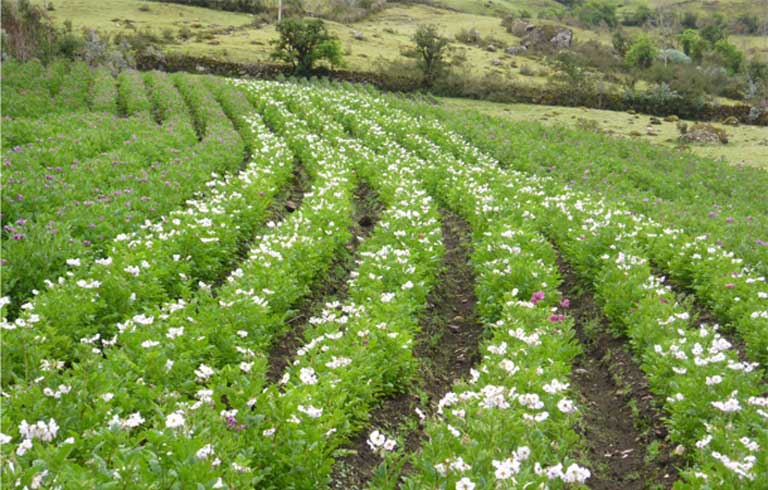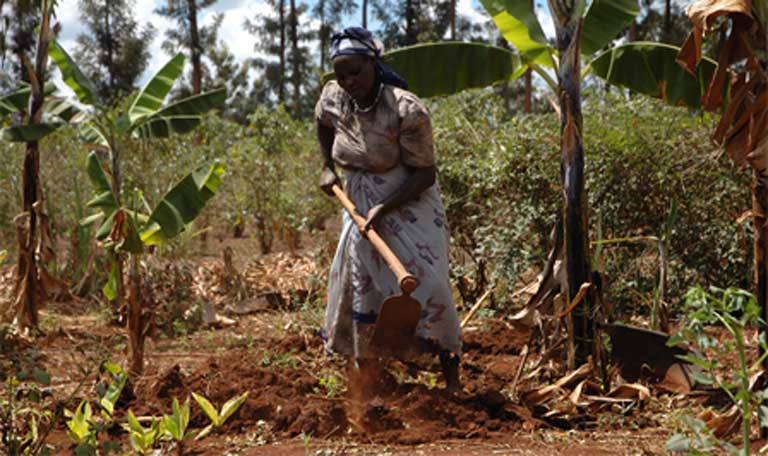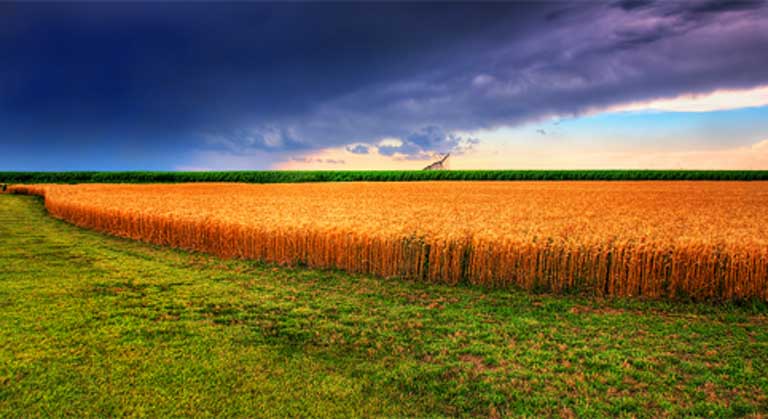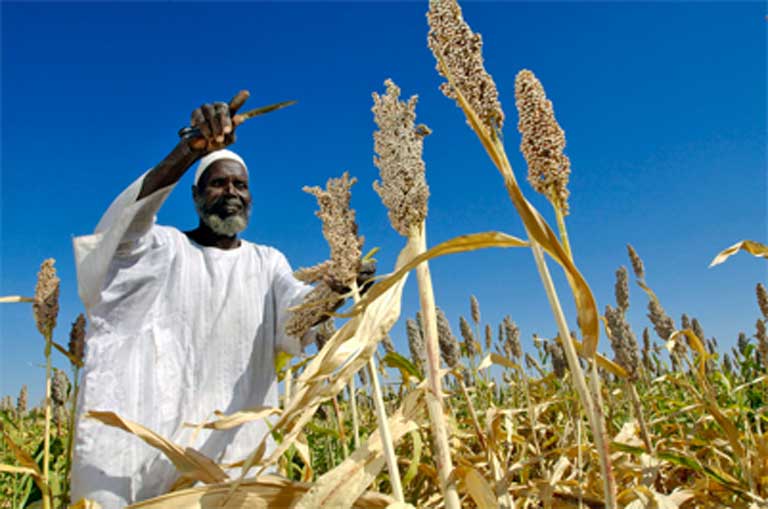- Attendees at the annual Global Landscape Forum conference in Bonn, Germany, this week sought approaches for implementing “climate-smart” agricultural practices to help keep global temperature from rising more than 2 degrees Celsius (3.6 degrees Fahrenheit) by 2100.
- Some 40 percent of the earth’s surface is used for food production, with 400 million small farmers worldwide, plus industrial agribusiness, so policymakers understand that climate-smart agriculture, practiced broadly, could play a significant role in reducing carbon emissions and helping nations meet their Paris carbon-reduction pledges.
- Numerous agricultural management practices to reduce carbon emissions, enhance food security, productivity and profitability, are available now. They include wider use of cover crops, low and no till techniques, increased application of organic fertilizers such as manure, judicious use of chemical fertilizers, and the growing of crops bred for climate resiliency.
- These techniques are already being embraced to a degree in the U.S. and globally. Land of Lakes and Kellogg’s, for example, are insisting on sustainable farm practices from their suppliers, while John Deere is building low-till equipment that allows for “precision farming,” optimizing returns on inputs while preserving soils and soil carbon.

The annual Global Landscapes Forum conference, which took place in Bonn, Germany, this week (19-20 December) comes at an opportune time for land-sector advocates to celebrate a recent victory at COP23, and to begin organizing steps to make critical changes in global agricultural practices to assist in reducing greenhouse gas emissions.
After the approval of the Paris Agreement in 2015, there was widespread recognition that the primary strategy for meeting the pact’s goals – reducing the burning of fossil fuels, while also preserving and restoring forests – would not be enough to keep global temperatures from rising more than 2 degrees Celsius (3.6 degrees Fahrenheit) by 2100.
The earth’s vast land sector, especially agricultural lands, and their carbon emissions would also need to be taken into account.
Perhaps the most significant achievement of the 23rd United Nations Climate Summit in Bonn in November, or COP23, was the ending of a six-year stalemate on how to address global agriculture in developed and developing countries. The need is clear: large- and small-scale farming and ranching operations worldwide contribute significantly to global carbon emissions.

Potential solutions – good for both farmers and climate mitigation – will now be officially negotiated in support of Paris Agreement goals through what’s called the Koronivia Joint Work on Agriculture. That means less debate and more action on the ground to support the three pillars of what the World Bank calls “climate-smart” agricultural projects.
Those three pillars: help farmers adapt to climate change, promote food security and profitability, and sequester significant amounts of soil carbon.
Climate-smart agricultural projects will be eligible for billions in finance that the World Bank will provide to national agricultural ministries, which in turn will be passed down to individual farms and farmers.
Considering that some 40 percent of the earth’s surface is used for food production, and that there are some 400 million small farmers worldwide, it becomes clear that climate-smart agriculture, practiced broadly, could play a significant role in reducing carbon emissions.
“If we’re going to slow the rate of global warming,” said Chris Meyer, a senior manager with the Environmental Defense Fund, and familiar with the discussions at the Global Landscape Forum, “we need to accelerate the exchange between policymakers, scientists and farmers.”

Agriculture crucial to Paris goals
The breakthrough in Bonn last month “is critically important because agriculture and land-use change are 25 percent of the greenhouse gas emission problem. But potentially they could be more than 25 percent of the solution,” said Marc Sadler, a practice manager in climate funds management for the World Bank in Washington, DC.
The advance made by COP23 negotiators “has enabled us to open up a new, important channel of information and will enable us to start building much more informed relationships between agriculture, innovation and the dynamic links with climate change,” said Sadler, whose World Bank colleagues led finance discussions at the Global Landscape Forum.
Jason Funk, associate director of land use for the Center for Carbon Removal in Washington, has followed the agricultural debate for years; he had all but given up hope for progress at COP23, where resistors were still entrenched.
Developing countries, especially in Africa, feared that changing farm practices to achieve climate mitigation goals would diminish crop yields and threaten livelihoods. Likewise, countries with a large industrial agribusiness sector, like Brazil and Argentina, feared the imposition of trade sanctions because cattle ranching and soy production are directly tied to deforestation and increased carbon emissions.
“The more the talks went on, the more trust was built and the more fear fell away,” Funk said. “Also, the urgency… to address climate change is rising to the level where [the parties] can’t pretend that the agricultural sector shouldn’t be involved.”

The understanding reached at COP23 raised the visibility of the agricultural agreement at the Global Landscape Forum this week, where it was an impromptu part of presentations and panel discussions.
A recent study led by Bronson Griscom, director of forest carbon science at The Nature Conservancy, was key to convincing policymakers of the need to advance climate-smart initiatives for the land sector – including forests, wetlands and especially agriculture.
Griscom, whose work was presented in the Proceedings of the National Academy of Sciences (PNAS), found that altered land-sector policies could reduce greenhouse gas emissions to a staggering degree.
“Natural climate solutions offer up to 37 percent of the mitigation needed between now and 2030 to keep temperature rise below 2 degrees Celsius,” Griscom wrote, reducing emissions by 11.3 million tons by that date. This is the “equivalent to halting the burning of oil, or the combined emissions of the U.S. and the European Union.”

Common-sense, climate-smart strategies
Jon Sanderman, a co-author with Griscom, as well as a soils experts at Massachusetts’ Woods Hole Research Center, said skeptical farmers are coming to understand that natural techniques used to sequester soil carbon and reduce agricultural emissions also end up benefiting soil health, water retention and crop yields, thus promoting food security – a big worry in developing countries.
“There are a thousand different management options out there [that can reduce emissions] depending on your region,” Sanderman said. “Keep green cover on the ground as long as possible. Have cover crops between cereal grains. Till less because tilling releases soil carbon. Make better use of organic fertilizers like manure, [while encouraging] judicious use of chemical fertilizers – which lead to run off and water pollution and also create emissions. Grow crops bred for climate resiliency.”
Sanderman explained that strides are already being made toward climate-smart agriculture. U.S. companies, such as Land of Lakes and Kellogg’s, are insisting on more sustainable farm practices from their suppliers. John Deere is building equipment that allows for “precision farming” and less tilling, said Funk. And oft-criticized Monsanto, he added, “is investing in developing crop genetics that are more climate resilient and require less fertilizer.”
Betsy Taylor, president of Breakthrough Strategies and Solutions in Maryland, a nonprofit that connects philanthropists with farm projects to promote healthy soil and carbon sequestration, said that farm regulations in red states such as Oklahoma, Nebraska and South Dakota had already shifted to sustainable practices in anticipation of carbon market offsets. When those offsets never materialized, the farms stayed on track due to improved soils, yields and lower costs.

Around the world in Ghana, she said, a farmer and PhD scientist named Kofi Boa runs a training program for African farmers that demonstrates how composting, no till practices and the integration of trees and animals into agricultural landscapes help to increase crop yields and promote water retention, while holding more soil carbon. Those trained by Boa go home to make lasting changes on their farms at little or no cost.
Maintaining and building momentum is key, now that the stalemate involving agriculture and its role in climate mitigation has been broken. Negotiating co-chairs representing Swaziland and Finland will be refining the agreement and spelling out concrete strategies in advance of the mid-year UN climate summit next spring.
Meanwhile, people like Taylor are eager for more action and less talk.
“We have gotten too comfortable thinking meetings and goals equal actual emission reductions,” Taylor said. “The lens for success is not statements or reports. It’s actually people on the ground making changes to sequester carbon.”
Justin Catanoso is a regular contributor to Mongabay and a professor of journalism at Wake Foreset University in North Carolina, USA. Follow him on Twitter @jcatanoso
Citation:
Griscom B., et al. (2017) Natural Climate Solutions. PNAS. DOI: 10.1073/pnas.1710465114
FEEDBACK: Use this form to send a message to the author of this post. If you want to post a public comment, you can do that at the bottom of the page.

